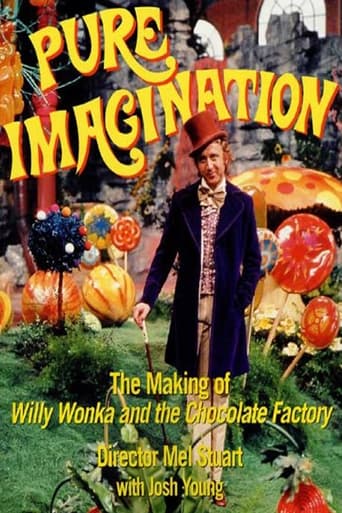ShangLuda
Admirable film.
Chirphymium
It's entirely possible that sending the audience out feeling lousy was intentional
AnhartLinkin
This story has more twists and turns than a second-rate soap opera.
johnunion
I must concur with littlebearyeah. The sound track is so loud and over the top that I actually quit watching the program before it was half completed. All the current Nat Geo programs seem to suffer this default where the attempt to generate emotion through loud, dramatic crescendos and other effects that make it extremely difficult to hear the narration. These sound tracks have become so intrusive and annoying that it has caused me to totally quit watching anything on Nat Geo TV. Too bad that the editors of these wonderful programs are so intent on ruining their product.
Jim Colyer
According to this excellent documentary, there are 200 billion stars in our galaxy. The Milky Way is a beautiful sight under dark skies. It is a spiral, a giant disk of stars. Our solar system lies between two of its spiral arms. Astronomers compare the Milky Way to the beautiful M74. We visit the Orion Nebula and witness star birth from dust and gas. We journey to the Crab Nebula, a supernova remnant from which heavy elements were created. We move to the galaxy's heart to discover the black hole called so-2. We travel upward to the globular clusters, the oldest stars. Dark matter is discussed, the glue holding the Milky Way together. Light passes through it. We see the Milky Way colliding with the Andromeda to form an elliptical. Geoff Marcy talks about how galaxies may have habitable zones much like stars while Seth Shostak adds some humor. National Geographic did this show.
rgcustomer
This narrator will always be Querns to me. When you play a memorable character, that happens.This is a good documentary, but its main flaw is that it is not what it claims to be about. It is only tangentially about the Milky Way. It's more about the universe in general. I had expected something that would map our view of the Milky Way onto a 3D model of it. I had expected that we'd pick out many interesting features. I wasn't so much interested in how they got there or where they are going (for this documentary). Given the completeness of the Milky Way we are shown, I suspect it's largely an artist's conception, rather than a model.Some further nits to pick: If you think the terms "star city" and "miraculous" should be used repeatedly in a science documentary, then this may be for you. But the dumbing-down of content in this manner started to irritate me.Dark matter, of course, has not been discovered. That's why we call it "dark matter". It's expected, but it has never been discovered. It's also possible that our understanding of gravity is inaccurate (as if that hasn't happened many times before).Also, the picture of the early universe was presented as if it were visible light, but that's a radio telescope picture. If they went to lengths (see what I did there?) to explain infrared, visible, and X-ray images, why not this? And I was disappointed that the computer-simulated universe which "perfectly" matches our own was not actually overlaid so we could see how perfect the match was with our own eyes. It's bizarre they would just make the claim without showing it.But generally it's a good overview of the universe, touching on a wide variety of topics including the life cycle of stars, types of stars, life cycle of galaxies, history of the universe, life, astronomical techniques, globular clusters, ultra-faint dwarf galaxies, and Andromeda. It's unusual to have all of this pulled together into a single presentation, and it does earn 7/10.
TxMike
A National Geographic presentation. I found this at my public library on DVD. The picture and sound, or course, are superb. The film, which runs roughly 90 minutes, makes ample use of relevant Hubble telescope images plus ground-based images to explore and explain the Universe, and in particular our own Milky Way galaxy.What happened immediately after the "big bang"? Why do Astronomers believe there HAS TO BE something called "dark matter" that is more massive than the visible universe and that provides the gravitational structure responsible for the arrangement of the billions of galaxies? Why will our Milky Way galaxy cease to exist as we know it in a mere 2.5 Billion years?December 2017 edit: Now an Astrophysicist has proposed a theory for the Universe which does not rely on Dark Energy and Dark Matter. Maybe we will live long enough to see how that turns out!These and many more questions are addressed and explained in a way that we laymen (non-Astrophysicists) can comprehend. They do it in a clever manner, they use the analogy of a person living in the far suburbs going downtown to a large city. For the person, they use the planet Earth. It, in our solar system, resides in a rather "rural" part of the Milky Way galaxy. But "downtown", which is packed with stars and hot in both temperature and destructive cosmic radiation, would be a very dangerous place in comparison.We on Earth are very comfortable in our little solar system, which has changed very little for a few Billion years, enabling life to form and evolve. There is good discussion of the possibility of life-sustaining planets elsewhere, and what kinds of observations and specialty instruments are being developed to facilitate that.I have been interested in the "night sky" since I was a small boy on an inflated truck inner tube watching for meteors. I am a scientist, but actually know relatively little about Astrophysics, and I found this film interesting from start to finish.I give it my highest recommendation for those who are interested in the subject, our Universe and our Milky Way galaxy.Any why will our Milky Way galaxy cease to exist as we know it? The galaxy Andromeda is moving towards our Milky Way galaxy at a great speed and they will collide in roughly 2.5 Billion years. They will not be destroyed, instead will interact in a way to form a single larger galaxy with a vastly different shape. Computer modeling shows what that interaction may look like, and they show real Hubble images of merged galaxies that look virtually identical to the computer images. Leave a note for your descendants, to watch for it in a couple of Billion years!


